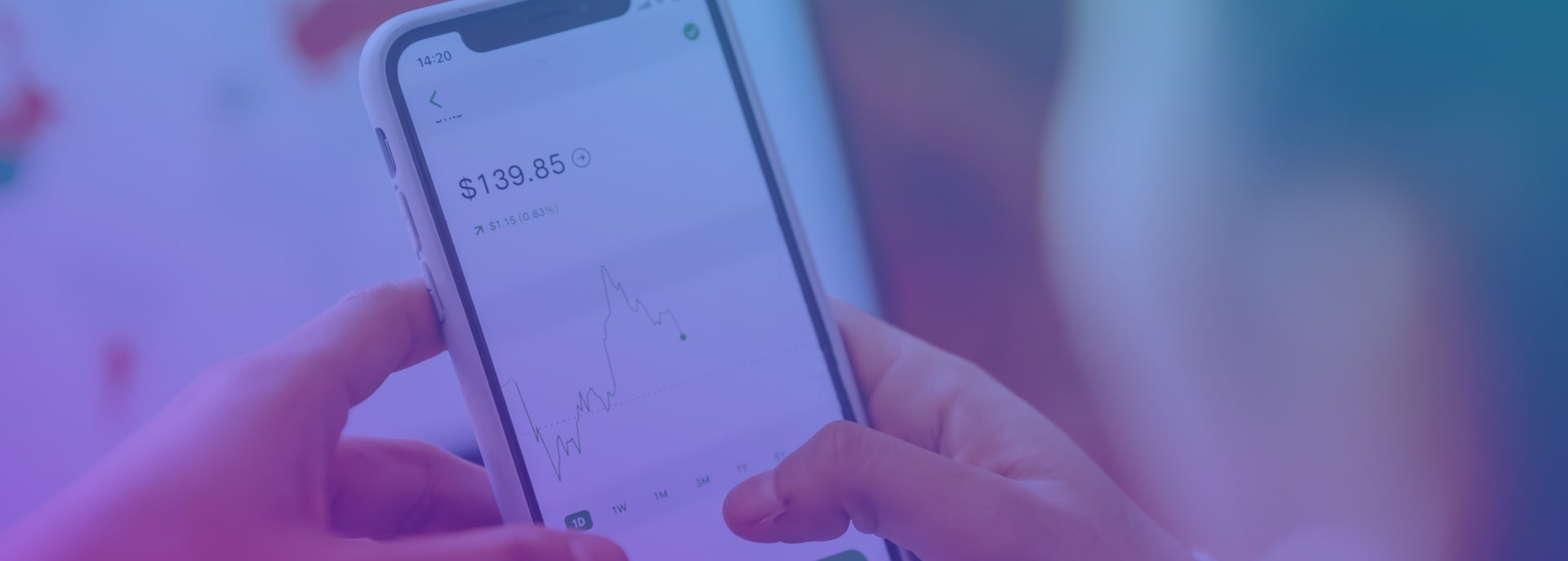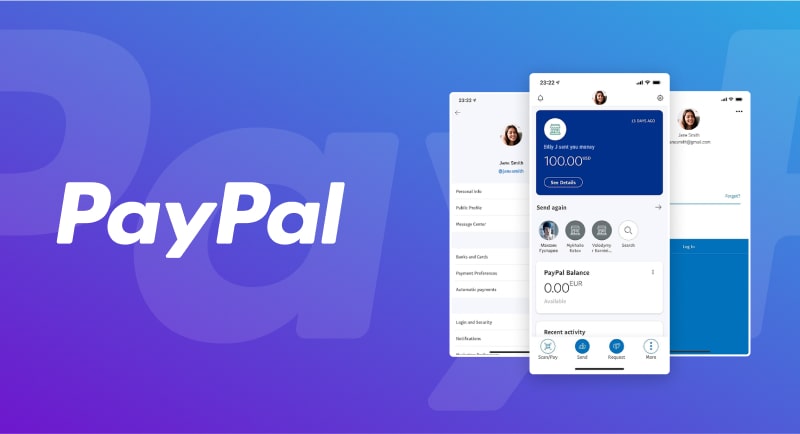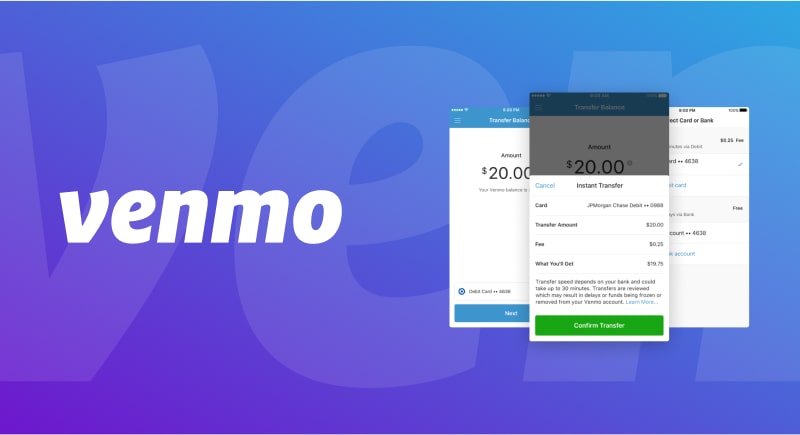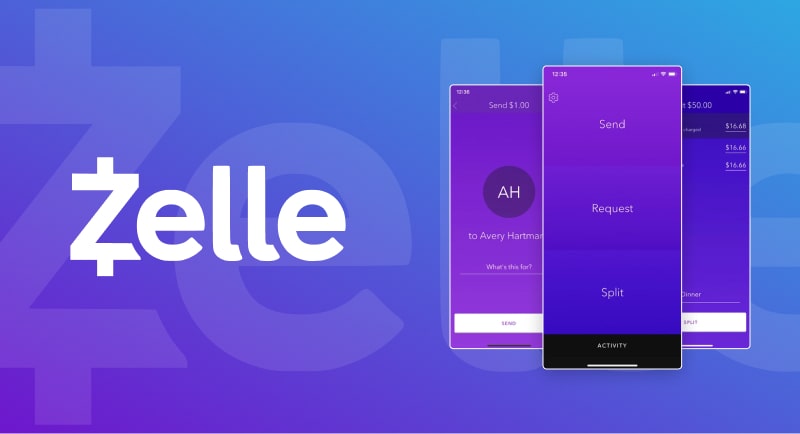
How to Build a Custom P2P Payment App in 2021

The global economy is taking rapid strides towards cashless, app-based payments, and there is a race to build a cash transfer app. Worldpay’s Global Payments Report 2020 states that cash usage declined by 42% of its 2019 volumes. The trend is set to accelerate because of the COVID-19 pandemic. An inclination towards contactless payments, affordable smartphones, rock-bottom mobile data tariffs, and rapid innovation have made the payment industry ripe for disruption. Thus, peer-to-peer (P2P) payment systems are already seeing exponential growth.
In this article, we explore P2P payment app development in greater detail and seek to answer questions such as:
- What is a P2P payment app?
- What are the latest industry trends in payments?
- What goes on behind the scenes in building a robust and secure P2P payment app?
- How much does P2P money transfer app development cost?
What Is a Peer-to-Peer Payment App?
A peer-to-peer payment app facilitates direct electronic funds transfers between two parties through their mobile phones. Payments can be made from one bank account to another or through debit or credit cards and local or international money transfers.
Whether you are settling accounts with your friend, paying for a coffee, paying utility bills, or transferring rent to your landlord, a P2P app is a cashless and secure option that doesn’t involve physical currency.
Types of P2P Payment Apps
Payment apps have evolved over the years and can be categorized into the following four types:
- Bank-centric apps — All leading banks have tapped into digital innovation. They offer dedicated banking apps to simplify payments and other banking services.
- Standalone apps — These are independently developed non-bank apps like Venmo. The apps allow users to transact through the natively developed in-app digital wallets. However, users can choose to link their bank accounts and credit/debit cards for transaction ease.
- Mobile O.S.-based apps — Giants like Apple and Google have developed their own payment apps, namely Apple Pay and Android Pay, to transact within their own ecosystems.
- Social Media/IM-based apps — These are useful for users who frequently send money to people within their contact lists and want to avoid elaborate authentication before each transaction.

Top P2P Payment Trends of 2021
Scoping the market for present trends would provide valuable data points that would help in making key decisions while deciding your app’s functionality and business model. To save you the effort of keeping up with technology, we have filtered out the top P2P payment trends for 2021.
- Best global environment for P2P growth — Increasing internet penetration, together with affordable smartphones and mobile data plans, means conditions are ripe for a P2P growth spurt. Users are skipping card-based payments and switching to P2P payments entirely.
- Payments to become flexible — As customer demands continue to evolve, P2P payment apps are set to offer flexibility and features to meet them. Splitting payments within an app, buy now/pay later, instant loan approvals, QR code-based payments, virtual credit and debit cards, etc. are some of the features that will evolve further.
- Biometric authentication to gain traction — Remembering many passwords for wallets, payment apps, and bank accounts is becoming a cumbersome task. Biometric payments solve this problem, as payments can be authenticated through fingerprints or voiceprint only.
- Fraud prevention on P2P payment apps — Non-tech-savvy users are at a greater risk, as they do not have the awareness to protect sensitive information.

What Are P2P Apps Used for?
As P2P apps allow users to make different types of payments, it is important to classify them. It will help you analyze the volumes and value coming from each category and maximize the reach of your app by including innovative features.
- Person-to-Person Payments — Imagine a group of college friends hanging out at a coffee shop and splitting the bill. Wouldn’t it be useful to have a split option within the app to maintain accounts and settle them at the end of the month? Alternatively, you can send money instantly to a family member or friend who calls you for help.
- Business-to-Person Payments — Businesses often have to engage daily-wagers and contractors for short-term work. It is cumbersome to arrange cash daily to pay them at the end of their shifts. P2P payment apps can solve this problem, saving time and resources.
- Person-to-Business Payments — This is a common form of digital payment where a customer pays for groceries, utilities, holidays, movies, restaurant food, and much more using digital channels.
- Charity Payments — How many times have you gone to a shopping mall or walked by a street and found volunteers asking for donations to support a cause close to you? Digital payments provide a convenient channel of paying the exact amount you want, without worrying about carrying cash or the non-availability of change.
What Features Should a P2P Payment App Have?
In order to develop a P2P money transfer app and make it stand out from the crowd, you’ll have to offer something unique. However, there are a few basic functionalities you must offer to make sure it has all the basic features required for making successful payments.
- Registration — This is the basic feature required to onboard a user. The registration process should capture basic details that can be verified. It is typically done using a mobile number, email address, social media accounts, etc. Successful registration allows users to link their bank accounts to the app.
- Digital Wallet — This gives users the convenience of transferring a lump-sum amount at once from their bank accounts and making payments throughout the week/month without undergoing an elaborate authentication process every time. A multi-currency wallet is an advanced feature that users making frequent international payments would require and appreciate.
- Send/Receive Money — This is the core functionality of your app. Users should have multiple options to send and receive money. Some common options are through QR codes, mobile numbers, email addresses, and entering bank account details.
- Send/Receive Invoice — Whether sending or receiving money, a user would want an invoice against it. A camera-enabled functionality would simplify this process, allowing a user to scan the barcode of an invoice and send a copy to the customer.
- Transaction History — This feature logs past payments, which users can access any time they want. In addition to cross-checking past payments, they can have a weekly/monthly/quarterly/yearly summary and download transaction receipts of past payments in case of a dispute.
- Push Notifications — Notifications play an essential role in keeping the users engaged. In addition to providing an alert for every transaction, notifications can be used to communicate new offers, discount codes, etc. that would reward users for using the app.
- OTP-based Authentication — This is an added layer of security that users would like to have. Every time they initiate a transaction, the app would ask them to enter their transaction pin. It prevents misuse when a mobile phone is stolen or misplaced.
- Bank Account Synchronization — Though not mandatory, it is a nice-to-have option that gives users peace of mind. Many users want to have the best of both worlds, i.e., the confidence of traditional banking systems to go with technological convenience.

Regulatory Compliance
Payments are a sensitive business, as they have an instant effect on a large number of users. Therefore, your P2P payment system must abide by the law of the land and meet (if possible, exceed) international money transfer standards. Regulations vary with geographical boundaries, so you should offer different versions of the app in different regions.
Blockchain security
This is the next level of security that will give confidence to your users when they register. Many banks and financial institutions have already done pilots with blockchain-based security features. Integrating blockchain within apps like the Cash app will be a futuristic move, giving you a head start over your competition.
3 P2P Payment Apps to Analyze Before Developing Yours
The payments industry is brimming with feature-rich apps. It is a good idea to examine their features, what works for them, and what doesn’t. This will help you build a custom P2P payment app better.
PayPal

PayPal started back in 1998, before the smartphone revolution. It has evolved with time and technology to maintain its position as the industry leader.
Pros:
- User-friendly mobile app
- Simple registration
- No fees on transactions with family and friends
- Strong encryption
Cons:
- Can freeze you out of your account
- Customer support is found wanting at times
- Charges both users and merchants for payments
Venmo

Though owned by PayPal, it has a social aspect to it and is primarily designed for people transacting with their friends and family. It has over 60 million users who can operate their accounts directly through a browser, though its mobile app offers a better experience.
Pros:
- Designed for mobile phones
- Easy to split and settle bills with friends
- Instant payments
Cons:
- US only
- Money can only be sent via the app
- 3% fee for sending money from credit cards
- 1% fee for cashing out to bank accounts
Zelle

Zelle is a popular payment app in the U.S. that allows users to send money to other Zelle users. Transactions can originate and end either from the app or linked bank accounts.
Pros:
- Money is received within minutes.
- Works with all major banks and credit unions
- No fee for sending money via the app
- Money can be sent through a mobile browser too.
Cons:
- US only
- Only one bank account can be designated for sending money.
- Recipient should also be using Zelle
P2P Payment System App Development Guide
Increasing popularity, convenience, and improved infrastructure for digital adoption are compelling reasons for peer-to-peer payment app development. Now that you know their popular features and industry leaders, let us take you through the steps of app development, right from planning to execution.
Step 1: Choose an app type
We introduced four broad types in this article. Though banking services and standalone apps are really popular, you need to decide the kind of model that would solve existing problems of P2P payments and offer something different.
Step 2: Choose your technology platform
iOS and Android are two major mobile operating systems currently in use. While Android has unrivalled reach, iOS has high-value users who would be willing to pay a premium for user-friendly, intuitive app features. Cross-platform development is also an option, though it’ll increase your development efforts.
Step 3: Determine feature lists and fine tune them
We have provided a list of features that are common in P2P payment apps. Depending upon the market you are targeting and the kind of app you want to develop, you need to evolve the feature list and tweak them further to appeal to your audience.
Step 4: Provide watertight security
Security is a non-negotiable aspect that must be given top priority in P2P payment app development, especially in a payment app. Biometric authentication, OTP-based authentication, etc. are replacing traditional passwords. You can go a step further and explore how blockchain technology can be used to improve security.
Step 5: Develop a fluid, intuitive user interface
User experience is key to the success of any app. Given the usual reluctance of users to embrace a new money transfer app, you get only one chance to make the right impression. An easy-to-navigate, simple user interface would attract users to your app and keep them there.
Step 6: Conduct thorough testing
You need to do multiple rounds of extensive testing to ensure your app functions the way you want it. Nobody wants to use a buggy, inconsistent app, especially when dealing with payments.
Step 7: Make it compliant with regulations
Apps similar to Square Cash dealing with bank transfer technologies need to be spot-on when it comes to regulations. Regulators around the world are closely monitoring the fintech space and revise their guidelines from time to time. You need to be ahead of the game to avoid unpleasant surprises.

Expected Challenges While Developing a P2P Payment App
Technical Challenges
With technology evolving at a breakneck pace, you need to be on your toes in tracking it to develop a custom peer-to-peer money transfer app. Here are a few technical challenges you would face:
- Security — It is an ongoing challenge for everyone who is going to build a cash transfer app. Hackers are finding new ways to break into payment apps, and many banking giants, PayPal, and NIC Asia have been victims. Your security needs to be foolproof and upgraded periodically to keep hackers at an arm’s distance.
- PCI-DSS Compliance — Organizations dealing with confidential user data must comply with PCI-DSS standards. These guidelines cover data security, access control and management, vulnerability management, network and system security, continuous security audits, etc.
- Currency Conversion — With a connected global economy covering over 180 countries, determining currency conversion rates in real time is a huge challenge. You need to strike the right balance between converting accurately while maintaining a short turnaround time.
Non-technical challenges
- Regional Restrictions — Inconsistent regulations across borders restrict P2P apps from providing instant settlements across borders. Going seamlessly beyond borders is on top of the list on every payment app, but is easier said than done.
- Dispute Resolution — You have a technically advanced system in place, but you need to back it up with a solid dispute redressal mechanism. There will be complaints of fraudulent transactions that need thorough investigation and resolution in the shortest possible time.
- Mindset — People are resistant to change the way they handle payments. Not everyone is tech-savvy, which is another hurdle to cross while marketing your app.
Cost of Developing a P2P Money Transfer App
The overall cost to develop a P2P payment app would depend on your choice of features, development platform, developer rates, and much more. Even though it is subjective, we provide a lump-sum idea in the table below to help you arrive at a figure to work with.
| Expense Head | Time | Hourly Rates | Cost |
|---|---|---|---|
| Research & planing | 2 weeks | $40.00 | $3,000.00 |
| Designing | 5 weeks | $50.00 | $8,000.00 |
| Programming | 8 weeks | $50.00 | $19,000.00 |
| Testing | 2 weeks | $40.00 | $4,000.00 |
| Total | 17 weeks | $34,000.00 |
These figures assume a 40-hour work week and standard developer rates, which can vary across countries.
In addition, you would need continuous post-release support, which would typically cost around $35 per hour.
How Can Our Experience Help You?
At Boston Unisoft, we have developed many fintech apps for global clients. We cover the entire gamut of the financial world. 95% of our projects are about building electronic systems that offer fintech solutions such as payment processing, payment gateways, forex, trade settlements, transaction reports, financial APIs, etc. We offer end-to-end solutions, offering services right from the design phase to post-release support and maintenance, covering everything in between.
Conclusion
Peer-to-peer payments are the new buzzword in the fintech industry. Whether you are a large bank, a medium-sized enterprise, a retail shop owner, or a startup, apps like the Cash app can take your business to an entirely new level while automating the bulk of your accounting tasks. If you develop a custom peer-to-peer money transfer app, it can be a constant revenue source. The world is ready to embrace contactless payments like never before. Do not miss the bus — get in touch with us!